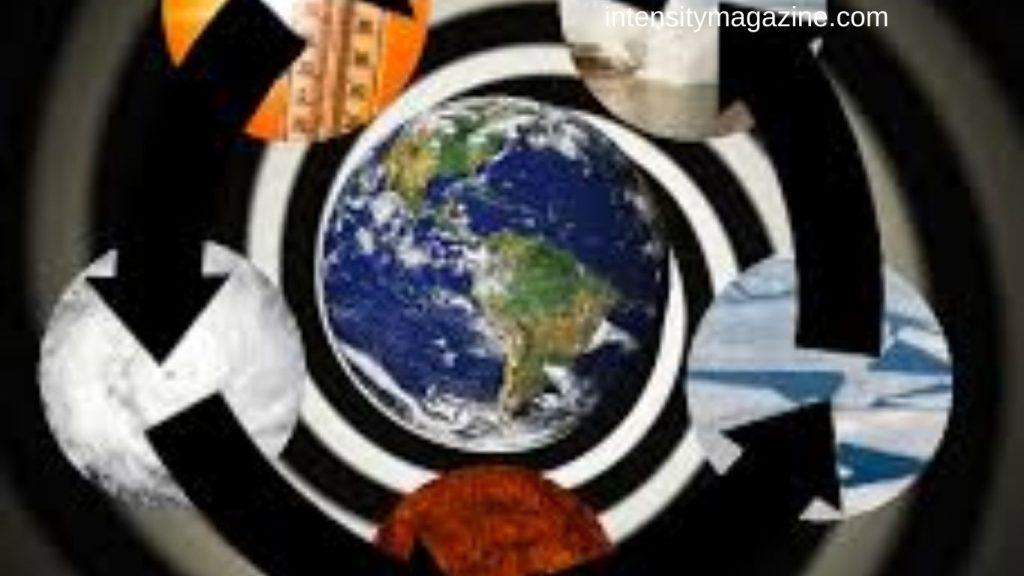Climate change may seem like a slow-moving disaster, but the science behind it is both simple and terrifying. Burning fossil fuels for electricity, transport, and industry releases greenhouse gases (GHGs) such as carbon dioxide (CO₂) and methane. These gases trap the sun’s heat in the atmosphere, steadily warming the planet. As global temperatures rise, the delicate balance of Earth’s climate systems begins to unravel.
The result? Stronger storms, longer droughts, raging wildfires, and vanishing glaciers. But what makes these events so dangerous is not just their immediate impact—it’s how they feed into one another. A wildfire releases carbon into the air, which raises temperatures, making more wildfires likely. A melting glacier lowers Earth’s ability to regulate temperature, which in turn causes faster melting. These cyclical reactions are known as climate feedback loops—and they could push us past the point of no return.
What Are Climate Feedback Loops?
In climate science, feedback loops describe processes that either amplify or weaken climate changes. The two categories are:
- Negative feedback loops, which stabilize systems by reducing change.
- Positive feedback loops, which amplify changes, accelerating warming.
- The most dangerous are positive loops because they create runaway effects.
Take water vapor as an example:
- Greenhouse gases heat the atmosphere.
- Warm air holds more water vapor.
- Water vapor itself is a heat-trapping gas.
- More vapor leads to more warming, which triggers even more evaporation.
This vicious cycle repeats endlessly, intensifying the crisis. Without negative feedbacks to balance them, these loops can lead to irreversible tipping points—moments where climate systems permanently shift into new, unstable states.
Imagine a wine glass tipping over: once spilled, the wine can’t go back in. That’s how tipping points work.
Arctic Feedback Loops: A Time Bomb Waiting to Explode
The Arctic is ground zero for climate feedback loops, and two examples are especially alarming: permafrost thaw and shrinking sea ice.
Permafrost and Methane Release
Arctic permafrost and frozen peat bogs hold an estimated 1,460 to 1,600 billion tons of carbon—nearly double the amount currently in the atmosphere. As these soils thaw, methane and carbon dioxide escape, further heating the planet.
Methane is particularly deadly. Over a 20-year period, it’s 86 times more powerful than CO₂ at trapping heat. Even though it breaks down faster than CO₂, its immediate punch supercharges warming.
The feedback loop looks like this: warmer air melts permafrost → methane is released → methane increases warming → more permafrost melts. It’s a ticking climate time bomb.
Vanishing Arctic Sea Ice
The second feedback loop involves disappearing sea ice. Ice has a high albedo effect, meaning it reflects 50–70% of incoming sunlight back into space. But when ice melts, it reveals dark ocean water, which reflects only about 6% and absorbs the rest, heating both water and air.
This means less ice leads to more warming, which melts even more ice—a brutal domino effect. Since 1979, Arctic ice extent has shrunk by 40%, devastating ecosystems and accelerating global warming.
Scientists warn we may witness ice-free Arctic summers within 20–25 years, and possibly sooner since observed losses are already outpacing climate models. Once gone, regrowth may be impossible.
Beyond the Arctic: Feedback Loops Across the Globe
These destructive loops aren’t confined to the far north. Around the world, similar cycles are unfolding:
- Amazon Rainforest Dieback: Already one-fifth destroyed, losing another fifth could flip the rainforest into dry savanna, releasing vast amounts of stored carbon while reducing the forest’s role as a global carbon sink.
- Wildfire Cycles: Rising heat creates conditions for massive wildfires. Fires release GHGs, reduce forests that absorb CO₂, and dry landscapes—making even more fires inevitable.
- Ocean Heat Storage: Warmer oceans absorb less carbon and release more heat into the atmosphere, driving stronger storms and disrupting marine ecosystems.
In each case, the worsening impacts feed directly back into the crisis, accelerating change beyond human control.
Tipping Points: The Point of No Return
The gravest danger of feedback loops is their potential to trigger tipping points. These are irreversible shifts in Earth’s systems, such as:
- Collapse of Greenland and West Antarctic ice sheets, raising sea levels by meters.
- Permanent Amazon rainforest dieback, eliminating one of the world’s largest carbon sinks.
- Breakdown of Atlantic Ocean circulation patterns, disrupting global climate stability.
Once these tipping points are reached, there’s no going back. Humanity would be forced to adapt to a drastically altered planet.
Can We Break the Cycle?
Despite the dire outlook, there is still hope. The same human activity driving these loops can also stop them. The solution is urgent but achievable:
Transition to Renewable Energy
Phasing out coal, oil, and gas in favor of solar, wind, and hydropower cuts the emissions that fuel dangerous loops. Every ton of CO₂ avoided buys us more time.
Protect and Restore Nature
Forests, wetlands, and mangroves act as powerful carbon sinks. Preserving ecosystems prevents emissions while restoring them increases carbon capture.
Support Climate Innovation
Carbon capture technology, green hydrogen, and sustainable agriculture offer real tools to reduce emissions and strengthen resilience.
Global and Local Action
International agreements like the Paris Accord matter, but local communities also play a vital role. From switching to clean energy at home to pushing leaders for systemic change, every action adds momentum.
The Power of People: Becoming Climate Leaders
Stopping dangerous feedback loops requires collective action. Across the world, everyday citizens are turning anxiety into activism. Organizations like the Climate Reality Leadership Corps, founded by Al Gore, empower people to lead local climate solutions, educate communities, and push for policy change.
Change isn’t only possible—it’s already happening. Solar and wind are now the cheapest forms of energy in many regions. Countries are pledging net-zero targets. Youth movements are demanding accountability.
The question is whether we act fast enough.
Frequently Asked Questions:
What are climate feedback loops?
Climate feedback loops are processes that either amplify or reduce climate change effects. Positive loops accelerate warming, while negative loops stabilize the system.
Why are positive feedback loops dangerous?
Positive feedback loops intensify global warming by creating self-reinforcing cycles, such as melting ice that exposes dark oceans, which then absorb more heat.
What is an example of a climate feedback loop?
One clear example is Arctic permafrost thaw. As it melts, methane is released, causing more warming, which leads to even more thawing.
What are climate tipping points?
Tipping points are irreversible shifts in Earth’s systems, like the collapse of ice sheets or the dieback of the Amazon rainforest.
How does disappearing Arctic sea ice affect global warming?
Arctic ice reflects sunlight back into space. Losing ice exposes dark oceans that absorb heat, accelerating warming worldwide.
Can feedback loops be stopped?
Yes, by reducing greenhouse gas emissions, protecting forests, transitioning to renewable energy, and adopting sustainable practices, we can slow dangerous loops.
How do feedback loops impact everyday life?
They drive extreme weather, rising sea levels, food insecurity, biodiversity loss, and economic instability—directly affecting communities around the world.
Conclusion
Climate feedback loops are not distant scientific theories—they are unfolding realities that accelerate global warming and magnify its dangers. From thawing Arctic permafrost to shrinking sea ice and burning rainforests, these vicious cycles threaten to push our planet past irreversible tipping points. Yet, the future is still within our control. By cutting fossil fuel use, protecting ecosystems, and driving innovation in clean energy, humanity can break the chain reaction before it spirals beyond repair. The challenge is urgent, but with collective action and bold leadership, we can safeguard a livable, sustainable planet for generations to come.



